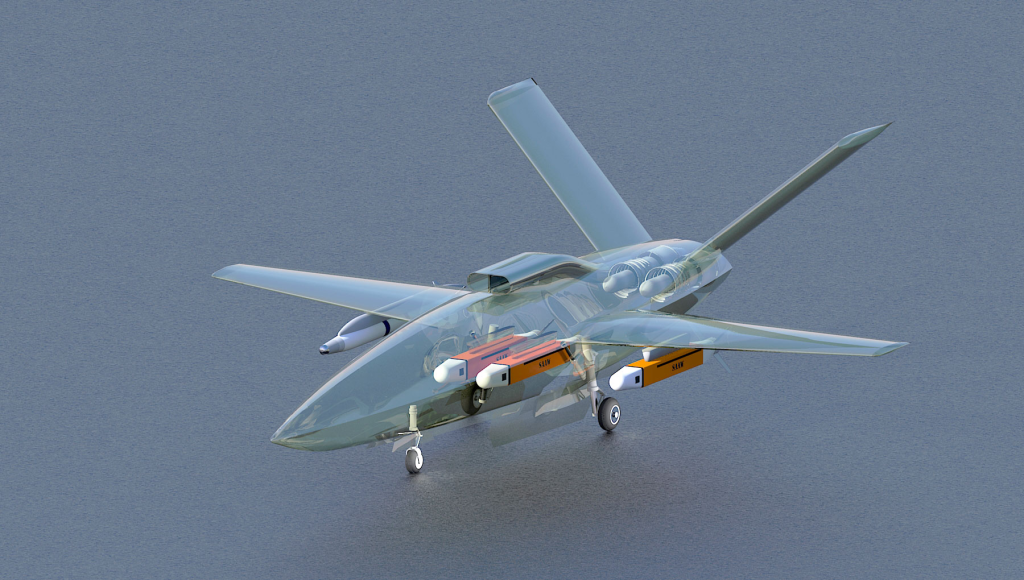
This is a difficult exercise, but if there’s one thing to look out for at the upcoming Aero India 2025 above all the aircraft, helicopters, drones, and systems on display, it’s the Hindustan Aeronautics Ltd (HAL) CATS Warrior, a stealthy loyal wingman-type armed drone at the cutting edge of Indian air power R&D. The uncrewed aircraft is slated to make its first flight later this year, but a demonstrator vehicle will be on display at the show at the Indian Air Force’s Yelahanka base starting Feb 10.
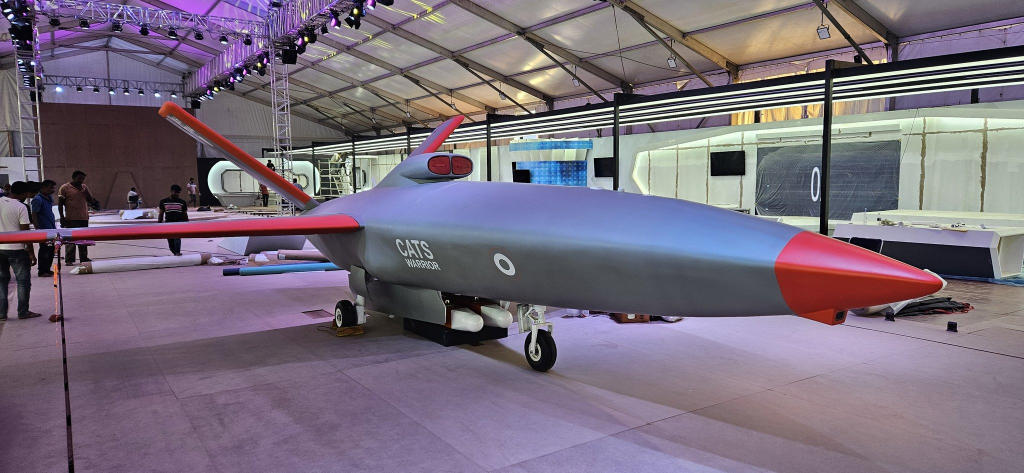
The CATS Warrior, intended to be similar in size and capability to the Boeing MQ-28 Ghost Bat, will be operated in collaboration with crewed fighter aircraft to conduct missions that include reconnaissance, strike, electronic attack and more, assuming the riskier aspects of such operations, allowing human pilots to be mission commanders.
Warrior is flagship element in a family of interconnected systems under HAL’s Combat Air Teaming System (CATS) program, which is also developing a cruise missile, close combat missile, swarm drones and a pseudo satellite networked around the Tejas (and later AMCA) combat fighters. The mock-up of the unmanned aircraft broke cover at Aero India show in 2021, but has been known to be on the drawing board since at least 2019.
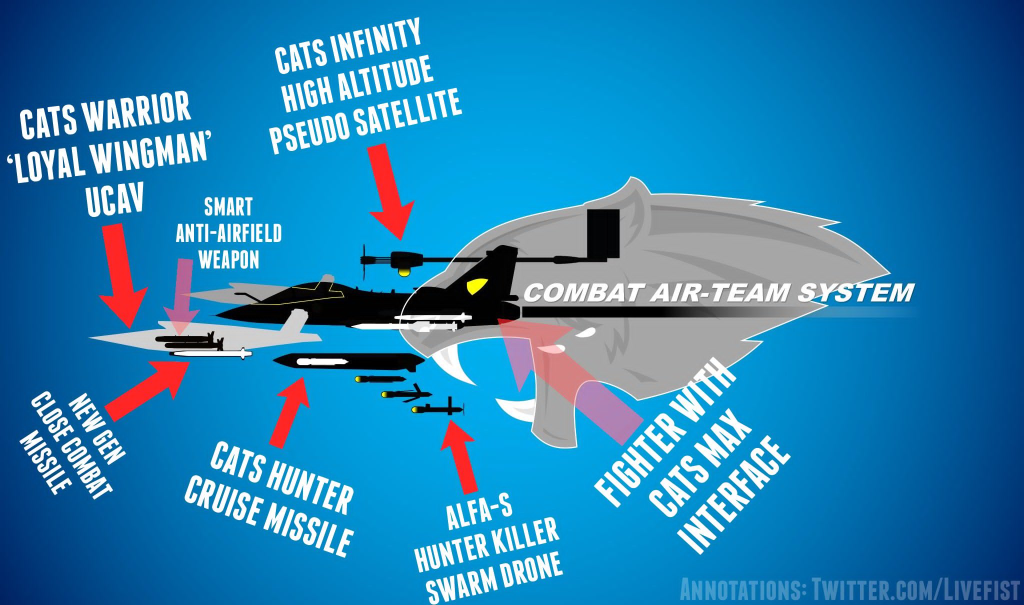
Weeks ago, HAL unveiled a full-scale demonstrator of the Warrior, announcing that it had crossed a significant milestone by successfully conducting an engine ground run. The Warrior is currently powered by twin HAL PTAE-W turbojet engines, an upgraded version of the engine that powers India’s Lakshya target drones.
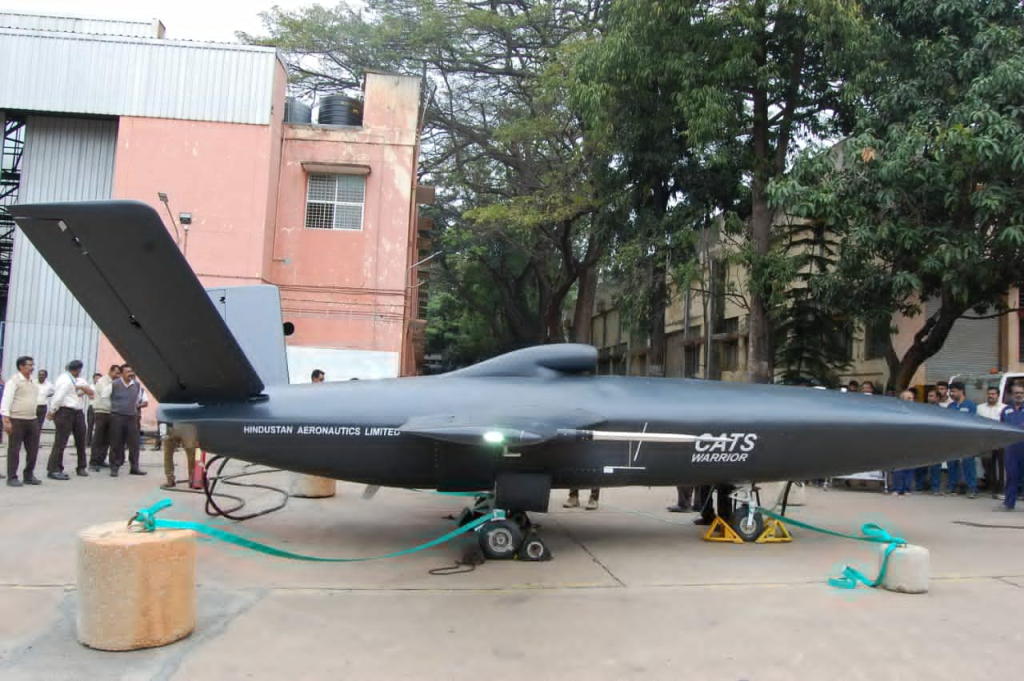
Things are moving fast, but the CATS Warrior already represents a significant leap forward in the country’s airpower modernisation efforts. “HAL getting back into the design game is key to resetting how we pursue aerospace in this country. In-house airframe, engine and avionics is how we get there,” aviation writer and author Angad Singh had said in a comment on X when the demonstrator was unveiled.
With its first flight scheduled for later this year and recent milestones in testing, the CATS Warrior should draw big interest from defence analysts, military planners, and global aviation experts. The Indian Air Force’s manned unmanned teaming (MUM-T) vision will involve both HAL’s CATS program as well as smaller focused AI-driven projects with private sector start-ups like NewSpace Research and Technologies (NRT). In fact the CATS program was initially believed to be a collaborative endeavour involving HAL with NRT, but Livefist learns that HAL is now pursuing CATS by itself. NRT is understood to be developing its own smaller collaborative combat aircraft (CCA) called Abhimanyu. Livefist will be reporting on that latter platform shortly.
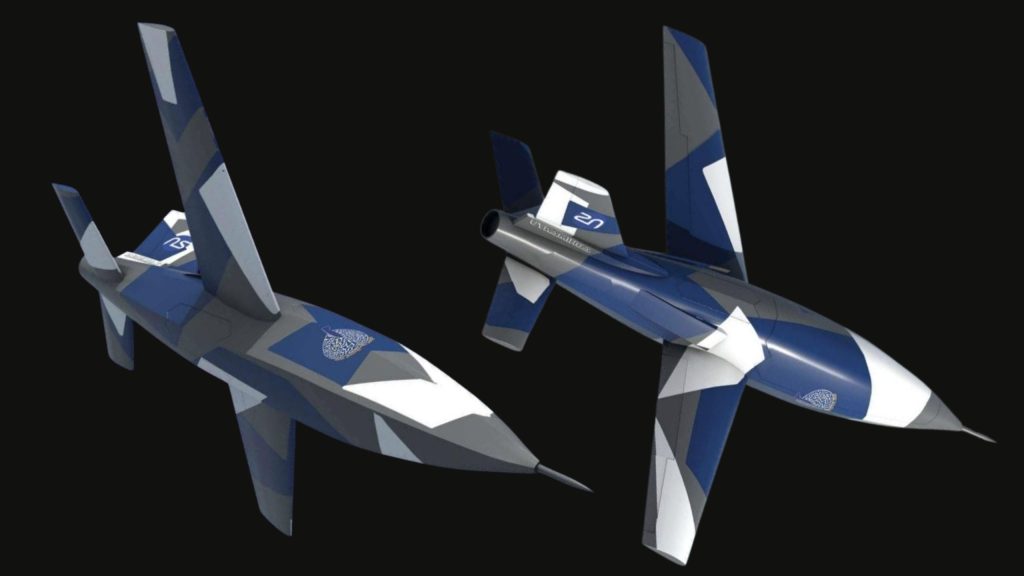
India’s fighter jet fleet is aging, and with squadrons depleting from the sanctioned 42 to just 31, the Indian Air Force (IAF) is in urgent need of force multipliers. Even as Indian planners look to shore up crewed fighter numbers through a combination of imports and domestic production of the Tejas Mk1A, the CATS Warrior will in the future bridge a gap that will become difficult to ignore.
Missions could include deep-strike missions, suppression of enemy air defenses using Indian-built Smart Anti-Airfield Weapons (SAAWs) and reconnaissance and surveillance serving as an extended sensor platform to provide real-time battlefield awareness.
The CATS Warrior is intended to be 100% indigenous, developed by HAL as part of India’s “Atmanirbhar Bharat” (Self-Reliant India) initiative. When it matures, it will be also be a major milestone in India’s aerospace manufacturing..
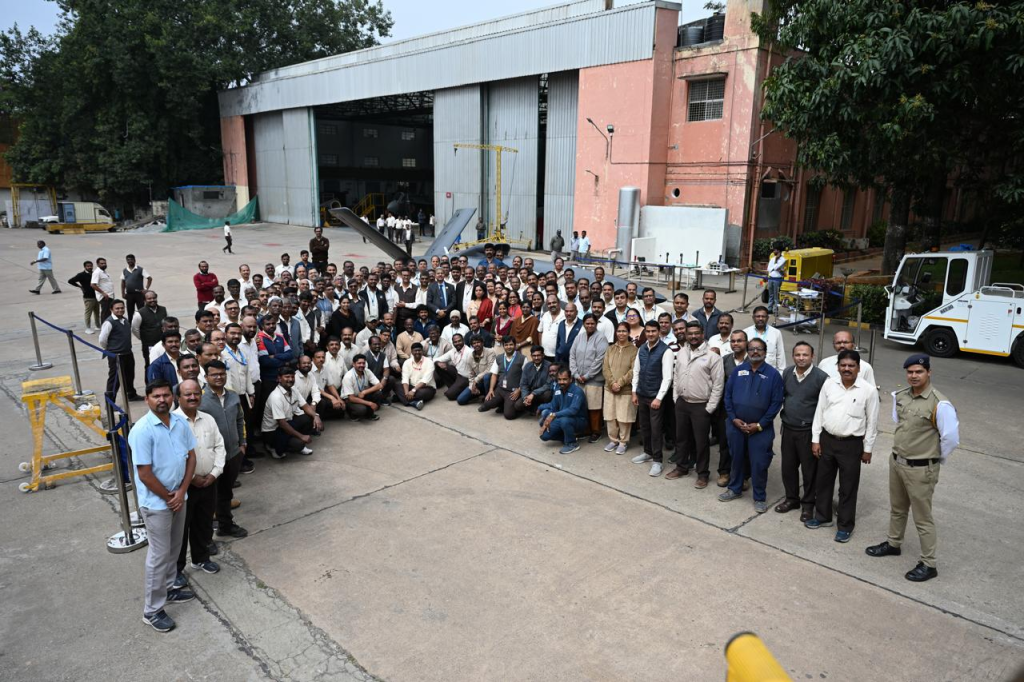
What’s key is that HAL’s expertise in manned fighter aircraft is now translating into the realm of autonomous warfare, a key area for future air forces. HAL has had its share of troubles and criticism, and much of that still holds, but the tech-first approach that CATS Warrior seems to embrace will help India not just in combat, but also in exporting low-cost drone tech to friendly nations.
The concept of a loyal wingman — an autonomous drone working alongside a fighter jet — is reshaping modern air warfare. The U.S., China, and Russia are already developing their own AI-assisted UCAVs, including Boeing’s MQ-28 Ghost Bat and China’s Feihong FH-97. By unveiling the CATS Warrior demonstrator at Aero India, India is signaling that it is ready to compete with these advanced air forces.
With its first flight just months away, anticipation is at an all-time high. The world will be watching as India showcases what could be a revolutionary step in autonomous air combat — not just in terms of capability, but in terms of development and deployment cost.
